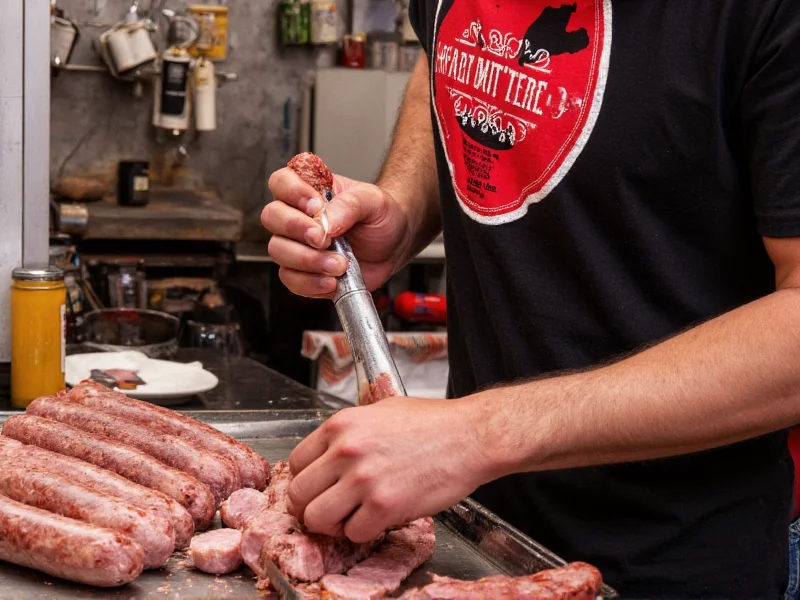The term "sausage ink master" refers to specialized food-grade ink formulations and printing systems designed specifically for labeling sausages and meat products during processing. These inks must meet strict food safety regulations to ensure they're non-toxic and safe for potential indirect contact with consumable products.
When working with meat processing equipment, understanding sausage ink technology is critical for maintaining product traceability and compliance. Sausage ink masters represent the concentrated formulations that manufacturers dilute to create working inks for continuous inkjet (CIJ) and thermal transfer printing systems used throughout sausage production lines.
Technical Specifications of Sausage Ink Systems
Modern sausage production facilities rely on precise marking systems to apply batch numbers, expiration dates, and regulatory information directly onto sausage casings or packaging. The "ink master" component serves as the concentrated base that, when properly mixed with solvents, creates the final printing solution.
These specialized inks must withstand challenging production environments including:
- Exposure to high-moisture processing conditions
- Contact with fats and oils present in meat products
- Temperature variations during cooking and chilling processes
- Extended shelf life requirements for packaged products
Food Safety Compliance Requirements
Regulatory compliance represents the most critical aspect of sausage ink technology. Reputable sausage ink master formulations adhere to multiple international food safety standards:
| Regulation | Region | Key Requirements |
|---|---|---|
| 21 CFR 175.300 | United States | Indirect food additives for printing inks |
| EU 10/2011 | European Union | Plastics intended to contact food |
| ISO 22000 | International | Food safety management systems |
| GB 9685-2016 | China | Food contact material standards |
Manufacturers must verify that both the ink master concentrate and final diluted ink meet these requirements through third-party testing and certification. The best sausage production line printing solutions include comprehensive documentation packages that processors can submit to food safety auditors.
Technical Challenges in Sausage Product Marking
Meat processing facilities face several unique challenges when implementing sausage ink master systems:
Adhesion Issues
Natural sausage casings present difficult printing surfaces due to their protein composition and moisture content. The right sausage casing ink technology must maintain adhesion through multiple processing stages including smoking, cooking, and chilling. Many processors report improved results when using ink masters specifically formulated for collagen or cellulose casings rather than generic food-safe inks.
Legibility Maintenance
Clear product identification remains essential throughout the supply chain. High-quality sausage ink masters produce markings that resist smudging during handling and maintain readability through temperature changes. The most advanced food industry printing solutions incorporate pigments that provide high contrast against various sausage colors while remaining food-safe.
Equipment Compatibility
Not all continuous inkjet systems work effectively with sausage-specific ink formulations. Processors should verify compatibility between their printing equipment and the chosen ink master system. Some sausage production line printing technologies require specific viscosity ranges and particle sizes to prevent nozzle clogging during extended production runs.
Implementation Best Practices
For optimal results with sausage ink master systems, meat processors should follow these industry-recommended practices:
- Conduct thorough compatibility testing with actual production conditions before full implementation
- Maintain strict mixing protocols for ink master concentrates to ensure consistent performance
- Implement regular cleaning schedules for printing equipment to prevent buildup
- Train maintenance staff on proper handling procedures for food-grade inks
- Keep detailed records of ink usage and performance for food safety audits
Many successful meat processing operations have found that working directly with ink manufacturers specializing in food applications yields better results than purchasing generic food-safe inks. These specialists understand the unique challenges of sausage product marking systems and can provide tailored solutions.
Future Developments in Meat Product Printing
The sausage ink technology field continues evolving with several promising advancements:
- Improved biodegradable formulations that maintain performance while reducing environmental impact
- Smart inks with time-temperature indicators for enhanced food safety monitoring
- Near-infrared readable inks for automated quality control systems
- Water-based systems that eliminate VOC concerns while maintaining adhesion properties
As food traceability requirements become more stringent globally, sausage ink master technology will play an increasingly important role in ensuring proper product identification throughout the supply chain. The most forward-thinking meat processors are already evaluating next-generation sausage production line printing solutions that integrate with broader food safety management systems.
Frequently Asked Questions
What makes sausage ink different from regular food-safe ink?
Sausage ink formulations specifically address the unique challenges of meat processing environments, including resistance to fats, oils, and moisture exposure during production. Regular food-safe inks may not maintain adhesion or legibility through sausage manufacturing processes like smoking and cooking.
Can sausage ink come into direct contact with meat products?
Most sausage ink systems are designed for indirect food contact, meaning they're applied to casings or packaging rather than directly onto the meat. Reputable formulations comply with food safety regulations for potential incidental contact, but processors should verify specific regulatory status with their ink supplier.
How long should printed information remain readable on sausages?
Quality sausage ink master systems should maintain legibility throughout the product's shelf life, typically 30-90 days for fresh products. The best food industry printing solutions withstand temperature changes, moisture exposure, and handling throughout the supply chain without significant degradation.
What's the difference between ink master and ready-to-use sausage ink?
Ink master refers to the concentrated formulation that processors dilute with specific solvents to create the working ink. Ready-to-use ink comes pre-mixed to the correct viscosity. Ink masters offer cost savings and flexibility for large operations, while ready-to-use options provide convenience for smaller facilities with less technical expertise.
How do I verify if a sausage ink system meets food safety requirements?
Reputable suppliers should provide comprehensive documentation including regulatory compliance statements, material safety data sheets, and third-party test results. Processors should verify that the specific formulation (not just the product line) has been tested for their intended application and meets relevant regional food safety standards.











 浙公网安备
33010002000092号
浙公网安备
33010002000092号 浙B2-20120091-4
浙B2-20120091-4